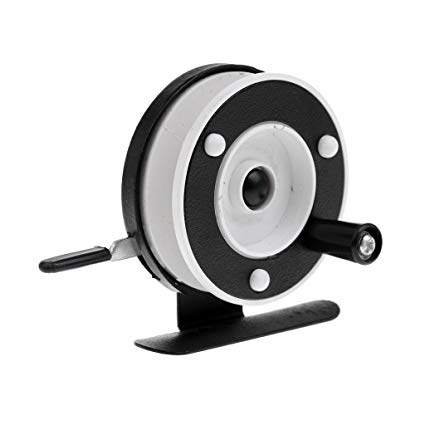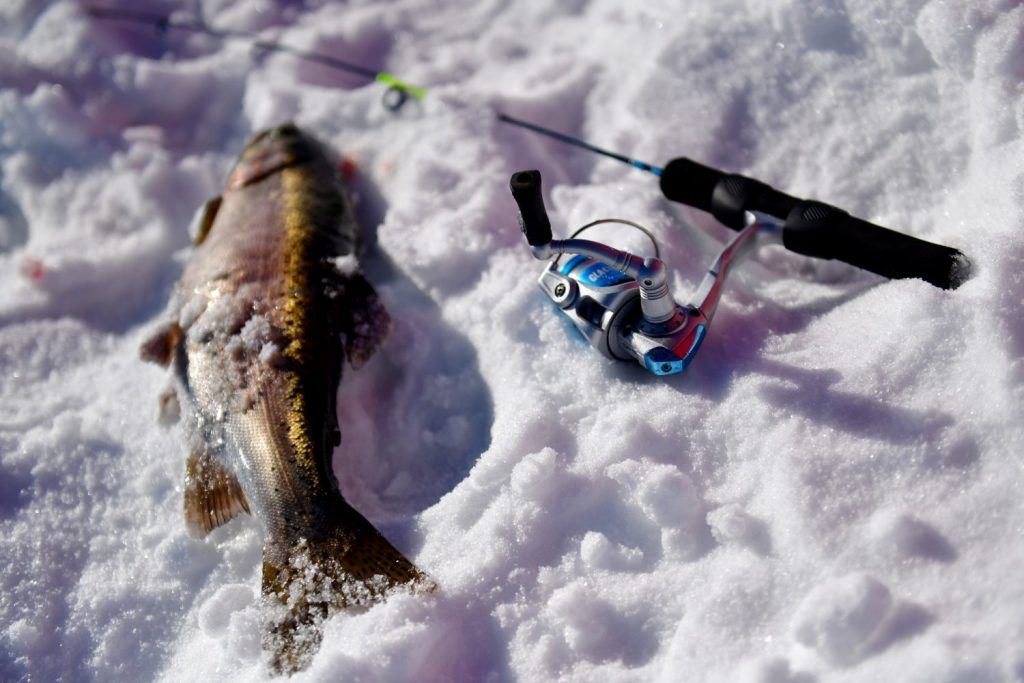If you love to fish, winter can be a boring time. But it doesn’t have to be! In fact, you can carry your fishing habit clear through the year. I tried this for the first time last December, and this year I am gearing up again. If you are the least bit interested in winter fishing, the most important thing to know is how to prepare the rod.
Benefits of Fishing in the Winter

Because I love this new hobby, I want to share some of the benefits of fishing in the winter.
- There is less competition in the colder months. Many people don’t like the cold, football is on, and there are animals to be hunted.
- Freshwater fish are grouping up. This means there will be a lot of fish in one place. The key is to find that area.
- All of this means there are more fish for you, just waiting to be caught.
How to Prepare Your Rod for Winter Fishing
Fishing in the wintertime means you are going to come in contact with some downright cold temperatures. Unfortunately, your rod is affected by the frigid temps just as much as you are! In fact, the lower the degrees the harder it will be to handle your rod. Fortunately, I’ve provided a step-by-step guide on how to prepare your rod for winter fishing.
Step 1: Choose a Thicker, Lighter Line

In the summertime, a thinner line is better to avoid vegetation. In the wintertime, there is no vegetation to avoid. This removes the biggest barrier to using a thicker line. Now you can finally use that Christmas gift a well-meaning family member purchased for you!
If you only have a smaller line, don’t fret! You don’t have to change out the line if you don’t want to. In fact, lines of a smaller diameter are less likely to get twisted up. They are also less likely to become stiff.
Step 2: Prepare the Line

If the line gets cold, and it will, you are in for a hard day. The low temperatures cause the line to kink up and twist. This leads to a tangled mess and backlash. That’s why it is so important to prepare the line first. All you have to do is apply a line conditioner.
This product works in a similar way to hair conditioner by keeping the line soft and manageable. There are many reputable brands on the market, but I have a few favorites I would recommend. In no particular order:
- Reel Magic
- KVD Line and Lure
- Ardent
- Bass Pro Brand
Step 3: Prepare the Rod Guides

Rod guides are just as susceptible to harsh weather. As line moves through the eyelets, the water freezes up inside. Eventually, the whole thing becomes a frozen mess and you can no longer cast or reel! You can see how this makes for a bad day.
Fortunately, the remedy for the rod guides is the same as the remedy for the lines! To prepare the eyelets for winter use, simply apply conditioner. This will prevent any freezing as water moves through.
Step 4: Attach an Appropriate Reel

By appropriate, I mean lightweight. In cold water, fish don’t put up nearly the fight they do in warm water. Therefore, you can attach a spincast or spinning reel with drag to maximize your winter fishing experience.
Don’t forget to use a thinner lubricant for your reel!
Step 5: Use the Right Bait

To catch the fish you want, it only makes since to use the right kind of bait.
Types of Bait
- Live – use shiners, worms, or minnows
- Hard – silver, gold, and chrome materials in the form of spinners and crankbait. Spoons are great for larger fish on the warmer winter days.
- Soft – choose transparent colors that mimic the movements of grub, tube bait, and straight-tail worms
- Lures – anything that mimics the movements of yearling, herring, shad, and perch
3 Tips and Tricks for Winter Fishing
Tip #1: Dress for the Weather

It is imperative that you wear warm clothing on your winter fishing trip. If you don’t, you will be cold and miserable the entire time. Worst case, you could experience frostbite or hypothermia! Here is a list of what you should always wear or bring with you to stay safe and toasty:
- Moisture-wicking, insulated base layer
- Lightweight and warm secondary layer
- Insulated overalls or insulated vest
- 2 pairs of insulated and breathable socks (bring at least 1 extra pair just in case)
- Waterproof, insulated boots
- Balaklava or neck gaiter and toque
- Stocking hat
- Fingerless gloves
- Insulated gloves or mittens
- Handmuff
Tip #2: Choose a Good Location

As any fisherperson knows, that’s easier said than done. However, there are a variety of tools available to help you decide where to fish.
- Corps of Engineers
- Department of Natural Resources
- Wildlife and Fisheries
- Marina websites
- Regionally targeted websites
- Ultimatebass.com
In addition to resources, and water level and flow are also key to choosing a great location. High water levels and lake overflow should be avoided. A high current should also be avoided. The fish will be more difficult to catch, there will be more debris, and it could be dangerous to you! For the best fishing, choose rivers and lakes that are at their normal levels.
Tip #3: Go at the Right Time

The first step to choosing the right time is looking at the weather report. The most important thing to check for is weather fronts, because the best time to go is before a front. If you plan to go after a front, try to choose a day when the sun is out. Then, position yourself on the northern bank of whatever body of water you are on.
No matter the weather, the best time of the day to fish in the winter is between 10am and 4pm.

